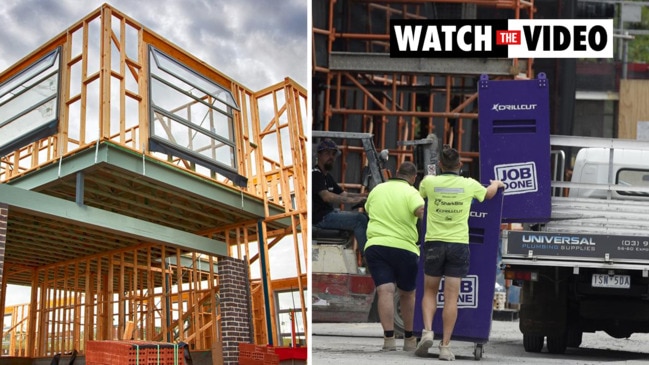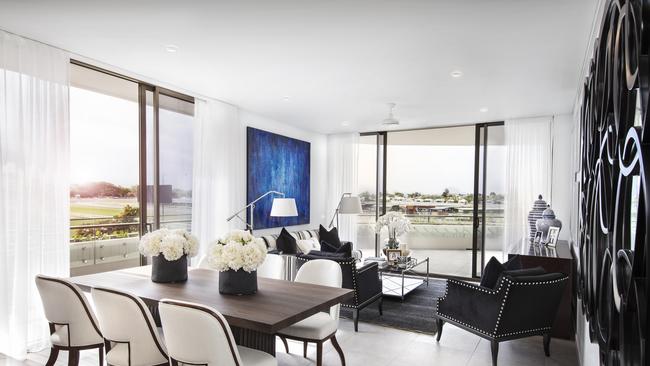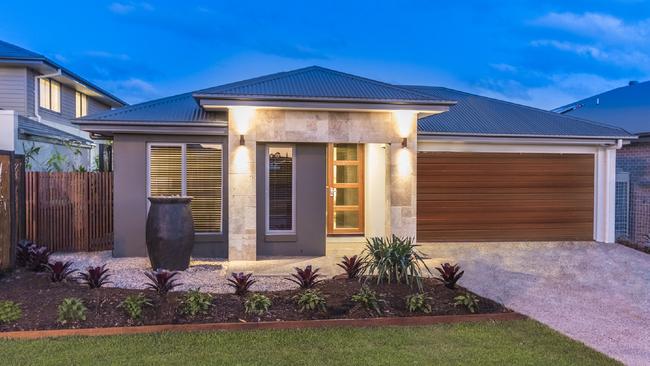Developer unveils solid annual profit in midst of supply chain, rates uncertainty
Mirvac has beaten its earnings guidance and has urged governments to improve housing supply in anticipation of the return to full immigration.

Mirvac is urging governments to focus on improving housing supply ahead of a full return of immigration, as the real estate giant posted an increased profit in a slowing property market.
The developer on Thursday said its operations were holding up despite rising interest rates and geopolitical uncertainty which has put supply chains under pressure and lifted costs.
Mirvac believes it can ride the housing cycle, beating its earnings guidance with a $906m annual profit for the 12 months to June 30, even as it warned that its residential sales are slowing.
The company’s result comes after REA Group, which posted its financial update earlier this week, said it expected the housing market to moderate.
Mirvac is considered a pointer for other large developers which are pressing ahead even as smaller builders have collapsed or pushed back projects.
The industry is combating a supply chain squeeze, rising costs and a series of construction failures, which could result in big developers taking market share even in a tough environment.

“There are clearly some headwinds in the sector around rising interest rates and construction escalations. But against that … it’s much more nuanced than that by customer type and by corridor,” Mirvac chief executive Susan Lloyd-Hurwitz said, warning that the fall-off in high-rise development could create a housing squeeze in coming years.
“By 2024, the amount of apartment supply on the east coast will be 40 per cent of what it was in 2018.
“So we’ve got increasing population and a looming under-supply of apartments that we’ll be delivering into.”
Ms Lloyd-Hurwitz said governments had been correct to put stimulus into the housing market during the Covid-19 pandemic period but that “ongoing stimulus of that nature really isn’t healthy for the market”.
She said that reform to planning systems was the most essential element at a state level and she backed build to rent – in which Mirvac is a leader in the listed market – as meeting the requirements of a growing cohort of renters. But she said that changes to managed investment trust rules were needed.
Mirvac is diversified with its property trust holding up and its funds management division boosted by winning the management rights to a $7.7bn AMP office trust.
“Uncertainty in macroeconomic and geopolitical environments is expected to continue, however, the quality of our integrated investment portfolio, strength of our residential development platform and pipeline, and the embedded value in our commercial and mixed-use development pipeline position us well to manage risks and continue our track record of delivering strong returns to securityholders through the cycle,” Ms Lloyd-Hurwitz said.
“We will continue to focus on progressing our active development pipeline, further improving our high-quality investment portfolio through our targeted and accelerated asset sales, and growing our external assets under management.”

Mirvac’s 8 per cent lift in operating profit to $596m equated to 15.1c a security and it paid a distribution of 10.2c a security.
It is targeting operating earnings in fiscal 2023 of at least 15.5c a security and distributions of at least 10.5c per security, along with more than 2500 residential-lot settlements.
The company settled 2523 residential lots, beating its 2500-lot settlement target and it has exchanged on about 2900 residential lots across apartments and land estates.
Mirvac last year launched six apartment projects which will further contribute to its $1.6bn of pre-sales and the company said it was well positioned.
“While conditions have normalised following 18 months of heightened demand, the underlying fundamentals of the residential market in which we operate remain solid, including low unemployment, tight vacancy levels, rising rents, restricted supply, and the return of overseas migration,” Ms Lloyd-Hurwitz said, adding that the projects were expected to be completed in an under-supplied market, positioning the company well to capture demand.
Ms Lloyd-Hurwitz said the company had experienced the ongoing effects of Covid-19, supply chain issues, labour shortages, rising inflation and interest rates, geopolitical tension, and extreme wet weather along Australia’s east coast.

Mirvac said its $12.4bn commercial and mixed-use development pipeline progressed well during the year and projects, including an overhaul of Sydney’s Harbourside shopping centre and a new tower at 55 Pitt St, were advancing.
Ms Lloyd-Hurwitz acknowledged that cost inflation continued to be a headwind but she said being an integrated builder meant the company could manage these risks.
She said the company‘s pipeline had the potential to deliver about $250m of recurring annual income over time, along with about $1.8bn in potential development value creation.
Morgan Stanley analysts noted that pre-sales have fallen, with 1100 lots exchanged in the past half against 1800 in the first half.
Defaults also have jumped to 2.7 per cent against the usual of less than 2 per cent – and the pain was concentrated in Melbourne apartments. Morgan Stanley said debt was weighing on guidance and noted that the company’s flood-hit centre at Toombul had been written down by $216m.
Citi analysts expect the stock to trade softer as its guidance for this financial year was below market expectations but they said the guidance given was conservative.
Mirvac securities added 8c to close at $2.17.







To join the conversation, please log in. Don't have an account? Register
Join the conversation, you are commenting as Logout